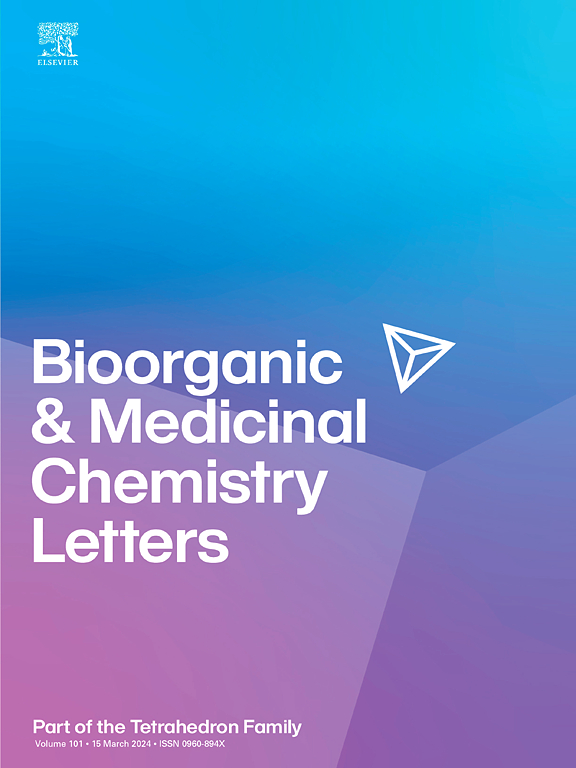Design and synthesis of hydroxychloroquine-sugar conjugates as promising antimalarial agents
IF 2.2
4区 医学
Q3 CHEMISTRY, MEDICINAL
引用次数: 0
Abstract
Novel hydroxychloroquine (HCQ)-sugar conjugates were evaluated for their antimalarial activity against chloroquine-sensitive (Pf3D7) and multi-resistant (PfDd2) strains of Plasmodium falciparum, cytotoxicity, and hydrolytic stability. HCQ-galactose conjugate with a 1,2-orthioester linkage exhibited the highest activity against Pf3D7 (IC50 value of 0.018 ± 0.001 μg/mL). Per-O-acetyl-β-d-glucopyranosyl-HCQ exhibited the highest activity against PfDd2 (IC50 = 0.20 ± 0.02 μg/mL), while also maintaining comparable activity against Pf3D7. Orthoester-linked conjugates were gradually hydrolyzed in human serum, resulting in HCQ release, which may contribute to their high activity. Glycosidic bond-linked conjugates showed high hydrolytic stability, retaining a certain level of activity, possibly without releasing HCQ. Toxicity assessments using the BHK21 cell line indicated significantly lower cytotoxicity for all HCQ-sugar conjugates compared to HCQ.

羟氯喹-糖偶联物抗疟药物的设计与合成
研究了新型羟氯喹(HCQ)糖偶联物对氯喹敏感(Pf3D7)和多重耐药(PfDd2)恶性疟原虫的抗疟活性、细胞毒性和水解稳定性。具有1,2-邻苯二甲酸酯连锁的半乳糖偶联物对Pf3D7的抑制活性最高(IC50值为0.018±0.001 μg/mL)。Per-O-acetyl-β-d-glucopyranosyl-HCQ对PfDd2的抑制活性最高(IC50 = 0.20±0.02 μg/mL),对Pf3D7的抑制活性也相当。正酯偶联物在人血清中逐渐水解,导致HCQ释放,这可能是其高活性的原因。糖苷键联缀合物具有较高的水解稳定性,保持一定的活性,可能不释放HCQ。使用BHK21细胞系进行的毒性评估表明,与HCQ相比,所有HCQ-糖偶联物的细胞毒性都显著降低。
本文章由计算机程序翻译,如有差异,请以英文原文为准。
求助全文
约1分钟内获得全文
求助全文
来源期刊
CiteScore
5.70
自引率
3.70%
发文量
463
审稿时长
27 days
期刊介绍:
Bioorganic & Medicinal Chemistry Letters presents preliminary experimental or theoretical research results of outstanding significance and timeliness on all aspects of science at the interface of chemistry and biology and on major advances in drug design and development. The journal publishes articles in the form of communications reporting experimental or theoretical results of special interest, and strives to provide maximum dissemination to a large, international audience.

 求助内容:
求助内容: 应助结果提醒方式:
应助结果提醒方式:


